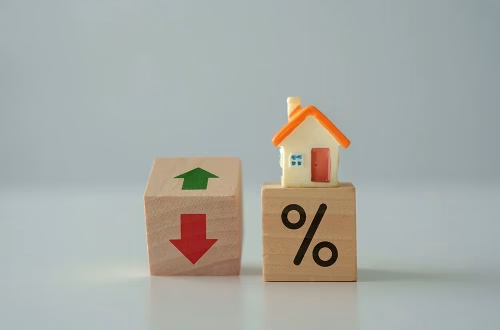What Are the Pros and Cons of Adjustable-Rate Mortgages?
Summary:
Adjustable-rate mortgages (ARMs) offer flexibility and lower initial rates compared to fixed-rate loans, making them attractive for short-term homeowners or investors. However, their fluctuating interest rates can lead to higher payments over time, posing risks for long-term borrowers. This article breaks down the advantages and drawbacks of ARMs, helping aspiring homeowners, business owners, and investors make informed decisions. Understanding ARMs is critical in today’s volatile market, where interest rate trends can significantly impact affordability and financial stability.
What This Means for You:
- Lower Initial Payments: ARMs often start with lower rates, freeing up cash flow for other investments or expenses.
- Risk of Rate Increases: Prepare for potential payment hikes by stress-testing your budget against future rate adjustments.
- Ideal for Short-Term Ownership: If you plan to sell or refinance within 5–7 years, an ARM could save you thousands in interest.
- Watch Economic Indicators: Rising inflation or Fed rate hikes may accelerate ARM adjustments, increasing your costs.
What Are the Pros and Cons of Adjustable-Rate Mortgages?
Adjustable-Rate Mortgages Explained:
An adjustable-rate mortgage (ARM) is a home loan with an interest rate that changes periodically based on a benchmark index (like the Secured Overnight Financing Rate or SOFR). Unlike fixed-rate mortgages, ARMs typically start with a lower introductory rate for a set period (e.g., 5/1 ARM: 5 years fixed, then adjusts annually). The rate adjustments are capped to limit borrower risk, but payments can still rise significantly over time.
ARMs are designed for borrowers who prioritize short-term savings or expect income growth to offset future payment increases. They’re particularly relevant in high-interest-rate environments where buyers seek temporary relief from steep fixed rates.
Types of Adjustable-Rate Mortgages:
Hybrid ARMs: These combine fixed and adjustable periods (e.g., 3/1, 5/1, 7/1, or 10/1 ARMs). The first number represents years with a fixed rate; the second indicates adjustment frequency afterward.
Interest-Only ARMs: Borrowers pay only interest for an initial period, reducing early payments but risking higher costs later when principal repayment begins.
Payment-Option ARMs: Allow flexible monthly payments (minimum, interest-only, or amortized), but unpaid interest may be added to the loan balance (“negative amortization”).
Pros of ARMs: Lower initial rates, potential savings if rates fall, and flexibility for short-term owners. Cons: Unpredictable payments, risk of “payment shock,” and complexity in understanding terms.
Requirements for Adjustable-Rate Mortgages:
Lenders evaluate credit score (typically 620+), debt-to-income ratio (DTI ≤ 45%), and down payment (3–20% depending on loan type). ARMs may require stricter scrutiny of financial stability due to their inherent risk. Some lenders also impose “qualifying rate” tests, ensuring borrowers can afford payments at the highest possible rate under the loan’s terms.
The Adjustable-Rate Mortgage Process:
- Pre-Approval: Compare ARM offers from multiple lenders, reviewing margin, index, and caps.
- Application: Submit financial documents, including proof of income and assets.
- Underwriting: The lender assesses risk and may require explanations for credit fluctuations.
- Appraisal: The home’s value must support the loan amount.
- Closing: Sign documents acknowledging rate-adjustment terms and caps.
Post-closing, borrowers receive adjustment notices before each rate change, detailing the new payment.
Choosing the Right Mortgage Option:
Consider an ARM if you plan to move or refinance before the fixed period ends, or if current fixed rates are prohibitively high. Evaluate the loan’s “fully indexed rate” (index + margin) to estimate future costs. Red flags include lenders pushing ARMs without explaining caps or ignoring your long-term plans. Fixed-rate mortgages may be safer for those prioritizing payment stability.
People Also Ask:
How often do ARM rates adjust? After the initial fixed period, most ARMs adjust annually, though some change monthly or every six months. The frequency depends on the loan terms.
Can you refinance an ARM to a fixed-rate mortgage? Yes, refinancing is common when rates rise or borrowers seek stability. However, closing costs and eligibility apply.
What happens if interest rates drop with an ARM? Your rate and payment may decrease, but only if the benchmark index falls. Note that floors may limit how low your rate can go.
Are ARMs riskier than fixed-rate mortgages? They carry more uncertainty, but caps (lifetime and periodic) mitigate extreme payment spikes. Risk depends on your financial flexibility.
Who benefits most from an ARM? Short-term homeowners, investors planning to sell, or borrowers expecting higher future income (e.g., medical residents).
Extra Information:
Consumer Financial Protection Bureau (CFPB): Offers tools to compare ARM vs. fixed-rate loans and calculate adjustment scenarios.
Freddie Mac: Publishes historical ARM rate data to help predict trends.
Expert Opinion:
ARMs can be powerful tools when used strategically, but they demand proactive financial planning. Borrowers should model worst-case scenarios using the loan’s lifetime cap and ensure their budgets can withstand payment fluctuations. In a rising-rate environment, locking in a fixed rate may provide long-term security, while ARMs could appeal if rate cuts are anticipated.
Key Terms:
- adjustable-rate mortgage vs fixed-rate
- 5/1 ARM pros and cons
- how do ARM rate caps work
- best lenders for adjustable-rate mortgages
- when to choose an ARM over fixed
- ARM margin and index explained
- risks of interest-only ARMs
*featured image sourced by Pixabay.com
Automatic Mortgage Calculator
Welcome to our Automatic Mortgage Calculator 4idiotz! Please just add your figures in the correct sections below and the Automatic Mortgage Calculator will automatically calculate the results for you and display them at the bottom of the page.





